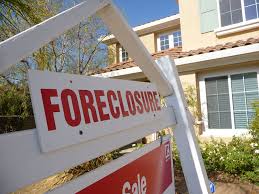For decades, the pandemic of racial wealth inequality amongst white and Black American families has greatly plagued the feasibility of success, stability, and comfortability in them. Wealth inequality isn’t a new thing, unfortunately. It's been around since the 70s and it has been ruining lives like wildfire since its inception. There are layers to wealth inequality; from segregation to government policy to the iconic housing crash of 2008/2009. Because of these key components, the lives of families have been altered for generations upon generations. George Ritzer once said, “perhaps of greatest importance is the fact that wealth not only accords a high – level position on one dimension of stratification, social class, but it is also an important factor in gaining similar positions on the other dimensions of stratification, status, and power”. It can be seen that this has been substantially exacerbated due to America’s coterie ideology of wealth.
There are many ways in which wealth inequality influences the lives of Black and white American families. One tantamount way is through the delude use of housing segregation. Most government-sponsored loan corporations and mortgage companies do not reveal that the policies they’re enforcing are indeed segregation inspired. They simply mask it better through contracts and fine prints. Redlining is a key component to housing segregation. Originally outlawed in 1968 by the Fair Housing Act, redlining is still very much alive and well and is aimed towards Black families. “Black communities have warned that it still exists in subtler and changed forms, in bank tactics that have targeted these same neighborhoods for predatory lending”. (Badger,2015)
All of these misfortunes have an exertion behind them. Banks in America have been notorious for practices like this long before the housing crash of 2008/2009 to Black families in particular. “Black Americans were unequally issued loans on unfavorable terms during the subprime loan bonanza that prefigured the housing crisis and are still suffering in its aftermath”. (Thielman, 2015) When tactics like redlining and unequal loans are issued, it calls for closed stratification systems. Economic capital becomes a thing of imagination and relative poverty becomes a thing of the present, with race as its buffer.
The government has undoubtedly made its mark in all of these travesties in more ways than one. Things like ghettos high tax rates, lower percentages of distributed wealth in Black communities, and government assistance programs wouldn’t exist without it. As the myths centered on these policies wouldn’t exist either. A ghetto in particular defined is a “neighborhood which is homogeneous and from which there are serious barriers to exit”. (NPR,2015) The United States completely redefined that definition with corrupt policies to uphold it. One policy, in particular, was blockbusting, and this policy was designed to convince white property owners to sell their homes at low prices, by instilling fear in them that minorities of color would be moving into their neighborhoods soon. As a result of policy and corruption “African Americans were crowded into neighborhoods in the ghetto because so much other housing was closed to them.” (NPR, 2015). Although the Emancipation Proclamation of 1863 technically freed Black people, it did not equip them to succeed. They were left with no land, resources, or knowledge to obtain equitable freedom, and to this day many Black people still have the same mentality as those “freed slaves” when it comes to land ownership, for the most part, that is not their own.
When discussing wealth inequality, it is imperative that one mentions the housing crash of 2008/2009. The housing crash didn’t just affect families on a broad scale, the damage was generational. To make matters worse, many Black and white families had very disparate experiences. Black families who had struggled prior to the housing crash ended up in a hole like no other while white families had favorable recoveries. In an article that goes in-depth about the housing crash, the disparities between white and black families during that time are discussed in conscious provoking detail. “In that time period, white wealth levels, excluding home equity, began to show signs of recovery, median white household wealth exhibited zero loss. During that same time period, however, Black households continued to experience severe declines, with the typical Black household losing 40 percent of non-home equity wealth”. (Sharps – Burd, Sarah, 2015,).
It may not seem like much being that it has become such normality, but little by little, it makes all the difference. It becomes in many ways a race that Black families can never seem to get a head start on. “Black families in America earn just $57.30 for every $100 in income earned by white families, according to the Census Bureau’s Current Population Survey. For every $100 in white family wealth, black families hold just $5.04.” (Badger, Emily, 2017,). A new generation cannot produce productively if its foundation lacks stability or some sort of wealth. In many cases, it is the home that provides that and with government housing and assistance programs being a crutch for these families, a house and its generational value slowly but surely becomes less of their worry. When one is impoverished for generations, their ability to hope and attain becomes weaker and weaker.
Wealth inequality and its influence in the lives of Black and white families have greatly shifted for the better and for the worse. “It is the result of a constructed multi-generational process that has been maintained by many of the same systematic impediments that have plagued blacks for centuries.”(Oliver, Melvin, 2006, ). One has to wonder what it’ll take for equality to be more than just a word. With government policy at its peak and poverty-stricken neighborhoods across the country on the rise, the future for wealth equality doesn't seem like it's in the blueprint. Formation of wealth equality in this society is vital to maintain success, stability, and comfortability in it for those of all race.
Blavitize your inbox! Join our daily newsletter for fresh stories and breaking news.
